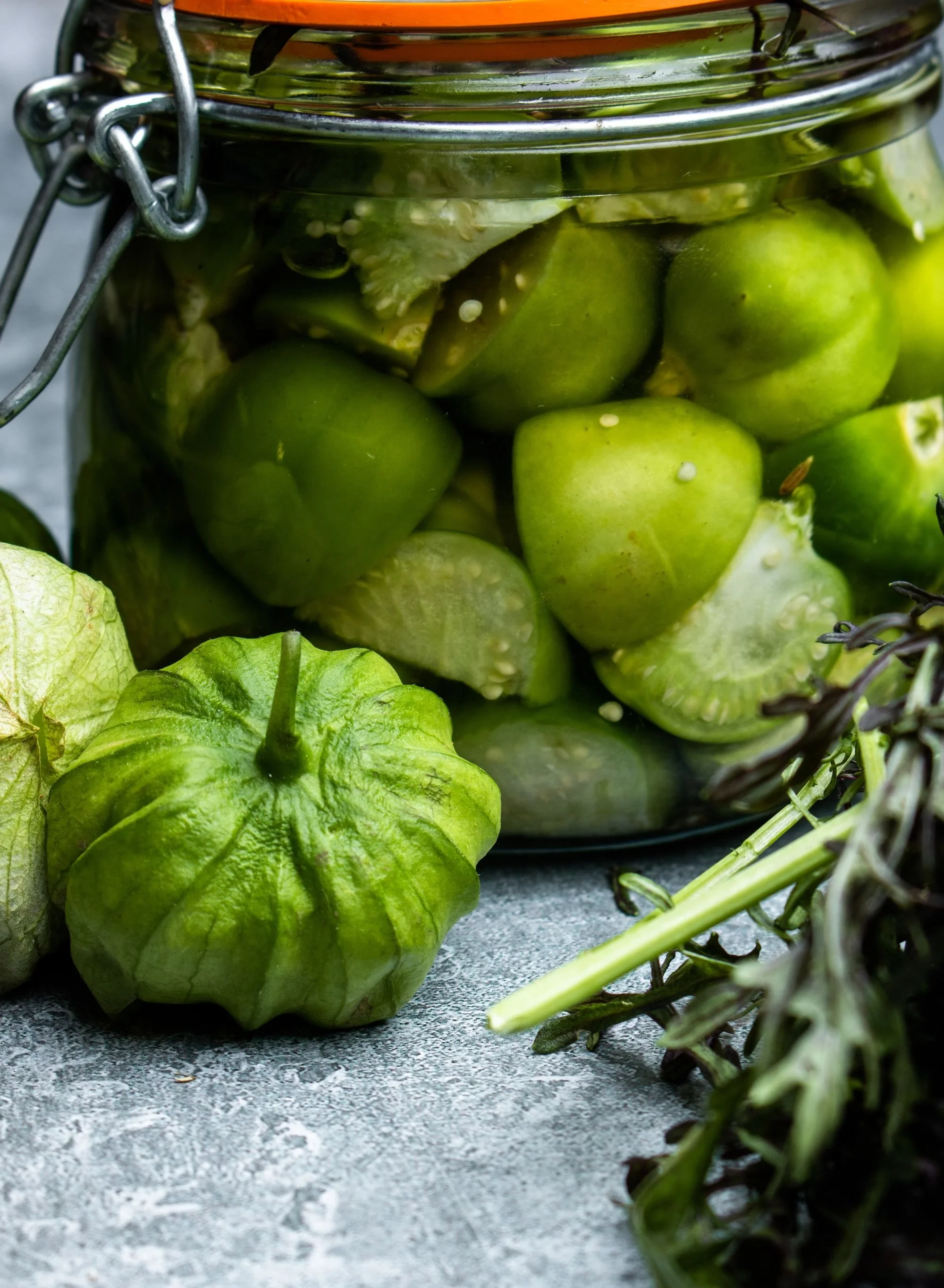Salsa Verde | Tomatillo Salsa
Tacos. Nachos. Or something to freshen up your ground turkey in a healthy evening salad. With just a few simple ingredients you can freshen up many recipes.
One of my favorite things about tomatillo salsa is how versatile it can be. I have used this salsa recipe to enhance my morning egg white breakfast sandwich, on grad school nachos for lunch, to adding a level of freshness to my turkey tacos for dinner.
But let’s start with what it is. What is a tomatillo? Well tomatillo might translate to little tomato and it might look like a small green tomato, but it actually isn’t a tomato. To my best understanding, a tomatillo is actually a fruit; although, I know I refer to them as a vegetable. But they are smaller, wrapped in husks, and a little more tart than a tomato. These husked fruits are largely grown in Mexico, and have proven quite versatile in the culinary world.
Tomatillos are versatile…
Many people roast tomatillos for salsa verde and add it to their favorite Mexican dish. But you can eat tomatillos raw as well. While roasting them will help deepen the flavor, they can also be used in sauces or vinaigrette for salads.
In addition to summery salad flavors, you can also grill tomatillos and pair it next to steak or your favorite pork dish. One of my absolute favorite parings with tomatillos is slow cooker pork with a creamy tomatillo sauce.
Salsa Verde Still Life
Ingredients
1 1/2 pounds tomatillos
1/2 cup chopped white onion
2 cloves (or more) garlic, optional
1/2 cup chopped cilantro leaves and stems
1 tablespoon fresh lime juice
2 jalapeño or serrano peppers , stemmed, seeded and halved or dehydrated peppers to be added to the blended mixture
Salt to taste
You might be asking yourself - what if I don’t have fresh garlic or I forgot the Serrano pepper at the store.
Don’t fret. You can add pre-prepared garlic to your mixer. Or if you are like me, I always have dehydrated peppers in a shaker jar in the pantry on hand. Instead of broiling the Serranos I sometimes simply shake the dehydrated peppers into the mixer. This allows me to control the temperature of the salsa verde with a little more intention.
But hey - you know the ingredients. Now you go do you to your flavor preferences!
Preparation - This method is for the Oven Roasted/Broil Method
Preheat the broiler:
The location of the rack is important. Try to put it about 6 inches from the heating element.
Prep the tomatillos, peppers, and garlic:
You are going to need to remove the papery husks from the tomatillos. Tomatillos tend to be a little sticky. Rinse them off. You can cut the tomatillos in half for broiling. But I find that this causes more liquid to be lost from the tomatillos in the roasting process. I leave them whole and place on a foil-lined baking sheet. Mid way through the broil I simply turn the tomatillos.
At this point you can add garlic cloves in their skin (if using). Place under a broiler for about 5-7 minutes to lightly blacken the skins of the tomatillos. Or if you don’t happen to have fresh garlic, you can add the jarred garlic to the blender in the mixing process.
Half and seed the peppers. Place on the tray with the tomatillos and garlic. Or if you don’t happen to have peppers, but you have dehydrated peppers on hand like I always do, you can add it to the mixer to blend it all together.
Combine the cooked tomatillos and seasonings, then pulse in a blender: Place the cooked tomatillos, lime juice, onions, garlic (if using), cilantro, chili peppers in a blender or food processor and pulse until all ingredients are finely chopped and mixed.
Season and serve:
Season with salt to taste.
Cool, then refrigerate. Serve with tacos or chips for salsa pair with your favorite Mexican dishes.
For this recipe I chose to use what I had on hand, but adding to the versatility of tomatillos and salsa verde you can make this salsa in large batches - and then dehydrate to to have it on hand.
From experience, I would suggest dehydrating excess rather than freezing it. I have had more luck rehydrating this salsa and keeping the flavors than I have defrosting it.
But then again, if you don’t have a dehydrator, you can still freeze the excess and have this on hand to drop it in a crockpot with your chosen protein and it will come out tasty.
You can even pickle tomatillos if that is more your taste.
Whatever your taste, if you like Mexican food and flavors tomatillos are likely something you are familiar with. These fruits are so versatile for flavor pairings, as well as forgiving in terms of preparation. With several options for preparation, surely tomatillos are something even novice cooks can work with.
What are some of your favorite recipes that you have used for tomatillos or salsa verde?



